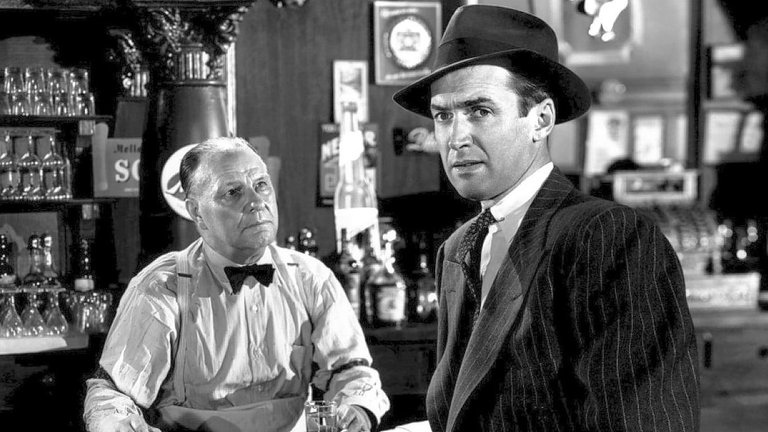Film Review: Call Northside 777 (1948)

In the post-WW2 era, Hollywood's exploration of crime dramas extended beyond the realm of film noir, as the industry sought to experiment with new forms of storytelling. One such venture was the "semi-documentary" film genre, which aimed to present dramatic reconstructions of real-life criminal cases. Among the pioneers of this trend was director Henry Hathaway, who had previously showcased his talent with the 1945 spy thriller House on the 92nd Street. Three years later, Hathaway directed another crime docudrama, Call Northside 777.
The film is based on the true story of Joseph Majczek and Theodore Marcinkiewicz, two Polish-American youths arrested and convicted in 1932 for the murder of Chicago policeman William D. Lundy. They spent 11 years in prison before being exonerated through the efforts of crusading Chicago Daily Times reporters John McPhaul and James McGuire. While the script remained mostly faithful to the real events, the names of the characters were changed for the film.
The plot begins with a prologue describing the violence in Prohibition-era Chicago, which claimed the lives of many policemen, including Patrolman John W. Bundy (played by Eddie Dunn). Bundy is gunned down by two men in a speakeasy run by Wanda Skutnik (played by Betty Garde), who later identifies Frank Wiecek (played by Richard Conte) and Tomek Zaleska (played by George Tyne) as the shooters. The two men are sentenced to 99 years in prison.
Eleven years later, a newspaper ad offering $5,000 for information about the true killers of Bundy catches the attention of newspaper editor Brian Kelly (played by Lee J. Cobb), who assigns reporter P.J. McNeal (played by James Stewart) to investigate. McNeal discovers that the ad was posted by Wiecek's elderly mother Tillie (played by Kasia Orzazewski), who had saved money after scrubbing floors for years. Although initially sceptical, McNeal gradually begins to believe that Wiecek is innocent after meeting him in prison and gathering evidence that might convince state authorities that the whole affair was a miscarriage of justice.
Produced by 20th Century Fox, *Call Northside 777 *benefited from the enlightened and daring approach of studio head Daryl F. Zanuck, who was willing to tackle some of the less flattering aspects of American society, including imperfections in the criminal justice system. A similar true story was explored one year earlier by Elia Kazan in Boomerang!.
Henry Hathaway, a very experienced director by that time, does a solid job, using a "semi-documentarian" style that reflects in the use of narration and authentic locations whenever possible, including the Illinois Statesville Prison. Although some critics and film scholars tend to characterize Call Northside 777 as a film noir, the most "noirish" scenes appear only relatively late in the film, when the protagonist tries to locate Wanda Skutnik in the seedy underbelly of Polish American neighborhoods of Chicago.
However, Hathaway, with all of his skills, cannot compensate for problems with the script that sometimes try too hard to "spice up" the real story with unnecessary melodrama, including scenes that feature McNeal and his wife, played by Helen Walker. The result is an overlong film, which, despite a fascinating true story and good direction, might look a little bit disappointing considering the names involved.
The general impression is rescued by James Stewart, whose persona of "squeaky clean all-American hero" fits very well with the parameters of the crusading protagonist. Stewart lifts the film above water, and the same can be said of his colleagues, who involve grand character actors like Lee J. Cobb and E. G. Marshall.
Call Northside 777 would be less pleasing to fans of film noir and more to history enthusiasts, mainly because it features some technologies that were quite a novelty at the time of production. One example is the over-dramatic scene near the end, when the crucial piece of evidence is enlarged photograph being sent "via wire," or primitive fax machine like those that were affordable only for big media companies. Another fascinating scene is the lie detector test, during which Leonard Keeler, forensic pioneer and one of the co-inventors of the polygraph, plays himself and uses the opportunity to explain the whole concept to the audience, which hadn't been familiar with it at the time of production.
Call Northside 777 is a powerful and engaging crime docudrama that remains a classic of its genre. While some aspects of the film may feel somewhat dated, the strong performances, coupled with Hathaway's direction and the film's well-crafted narrative, make it recommended viewing for fans of crime dramas and classic cinema.
RATING: 6/10 (++)
Blog in Croatian https://draxblog.com
Blog in English https://draxreview.wordpress.com/
InLeo blog https://inleo.io/@drax.leo
Hiveonboard: https://hiveonboard.com?ref=drax
Rising Star game: https://www.risingstargame.com?referrer=drax
1Inch: https://1inch.exchange/#/r/0x83823d8CCB74F828148258BB4457642124b1328e
BTC donations: 1EWxiMiP6iiG9rger3NuUSd6HByaxQWafG
ETH donations: 0xB305F144323b99e6f8b1d66f5D7DE78B498C32A7
BCH donations: qpvxw0jax79lhmvlgcldkzpqanf03r9cjv8y6gtmk9
Posted Using InLeo Alpha
Congratulations @drax! You have completed the following achievement on the Hive blockchain And have been rewarded with New badge(s)
Your next target is to reach 510000 upvotes.
You can view your badges on your board and compare yourself to others in the Ranking
If you no longer want to receive notifications, reply to this comment with the word
STOP